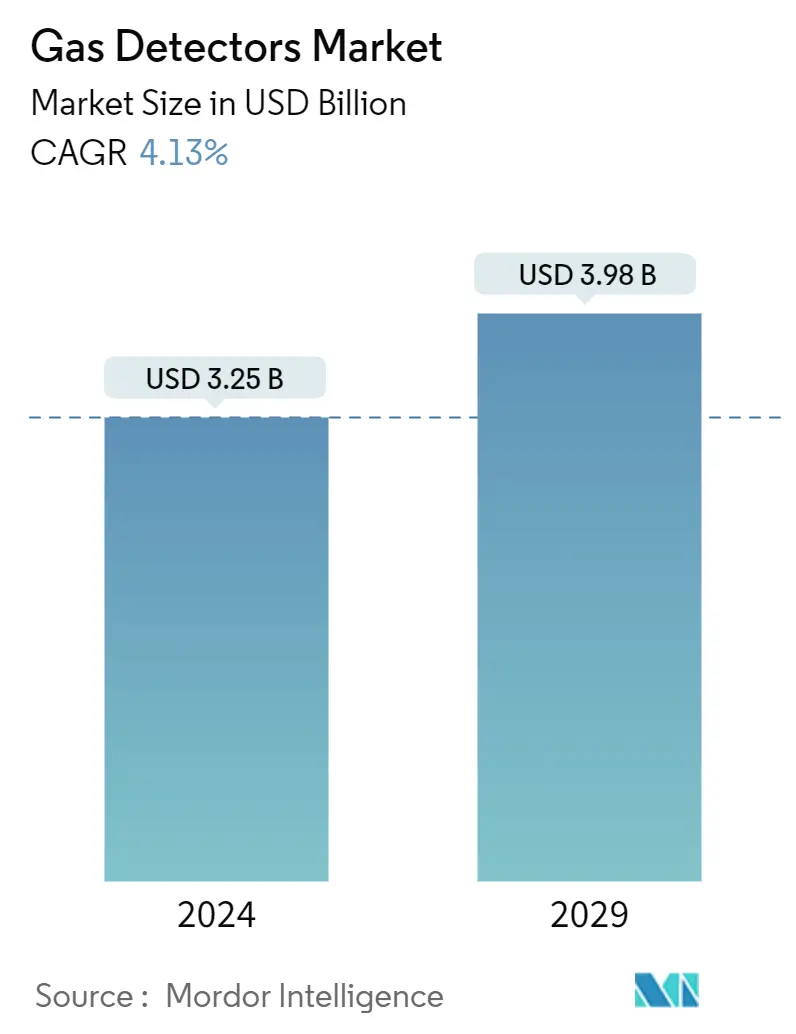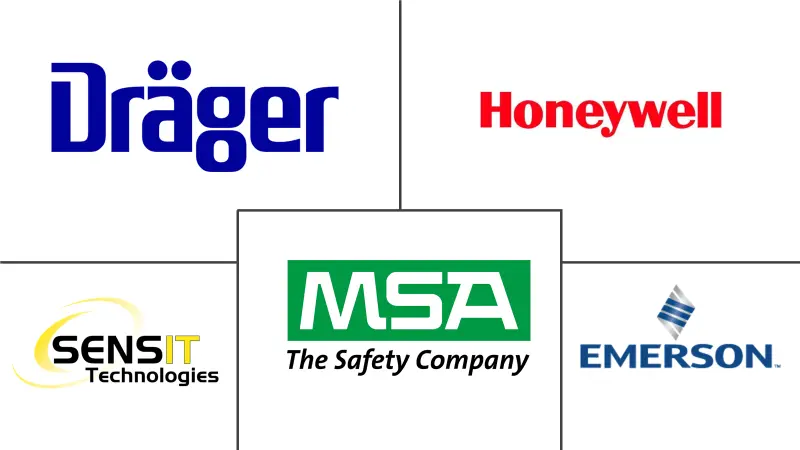Market Size of Gas Detectors Industry

| Study Period | 2019 - 2029 |
| Market Size (2024) | USD 3.25 Billion |
| Market Size (2029) | USD 3.98 Billion |
| CAGR (2024 - 2029) | 4.13 % |
| Fastest Growing Market | Asia Pacific |
| Largest Market | North America |
Major Players
*Disclaimer: Major Players sorted in no particular order |
Need a report that reflects how COVID-19 has impacted this market and its growth?
Gas Detector Market Analysis
The Gas Detectors Market size is estimated at USD 3.25 billion in 2024, and is expected to reach USD 3.98 billion by 2029, growing at a CAGR of 4.13% during the forecast period (2024-2029).
- Several factors, like the increasing awareness of workplace safety, advancements in technology leading to enhancements in accuracy, reliability, use of gas detectors, rapid industrialization, and growing focus on environmental monitoring, are anticipated to drive the growth of the studied market significantly.
- Several major market vendors are developing advanced gas detectors with applications across clinical assays, environmental emission control, explosive detection, agricultural storage, shipping, and workplace hazard monitoring. For instance, in July 2023, ATO Inc. introduced its new line of multi-gas detectors for confined spaces and other complex environments. It is claimed to improve worker safety by quickly identifying poisonous compounds, flammable gases, and oxygen levels by monitoring up to four different gases simultaneously.
- Stringent government regulations have also resulted in the efficiency enhancement of combustion within the vehicle to limit the emission of harmful pollutants. This has further increased the adoption of gas sensors and detectors, therefore gaining applications in providing real-time feedback to emission management systems of automobiles. In June 2023, the Biden-Harris Administration launched a whole-of-government initiative to significantly reduce greenhouse gas emissions. In addition, President Biden's national goal is to cut global methane emissions by 30 percent below 2020 levels by 2030, which also plays an important role in the penetration of gas detectors in the automotive industry. The increasing cases of gas leaks in various end-user industries are further creating a demand for gas detectors.
- Wireless/portable gas detectors are also witnessing widespread adoption owing to their reduced initial implementation costs and recurrent savings, lower maintenance costs, better workforce management, faster resource workflow, and improved safety. Moreover, the development of sensor capabilities and miniaturization, coupled with improved communication capabilities, enables the integration of IoT sensors into numerous machines and devices without compromising the detection of toxic or flammable gases at safe distances. As IoT sensors' cost is declining, industries dealing with hazardous/explosive materials have started integrating these sensors into their day-to-day operations to improve environmental safety and operational efficiency.
- Governmental agencies have been taking proactive measures to enforce the use of gas detectors in potentially hazardous locations, where they are seen as a vital cog for triggering emergency procedures across several industries in case of an abnormal increase in the concentration of gases that are actively employed for monitoring the air quality and detection of combustible gases primarily in the chemical, industrial, medical, and automotive industries. With increased R&D efforts, along with the technological advancements by some prominent players, technologies such as tunable diode lasers (TDLA) are being developed, which detect and measure gases at a low density of air, thereby offering several measurement advantages, such as highly stable calibration and less cross-interference from the presence of other gases.
- On the flip side, the lack of skilled labor is an essential restraining factor for the gas detector market. Training associated with specific applications of gas leak detectors is essential, and the shortage of skilled personnel could hinder the adoption and effective use of gas detectors.
- Further, the high cost of production of wireless gas detectors and the inability of the detectors to restrict probable fire hazards could hinder the widespread adoption of gas detectors.
